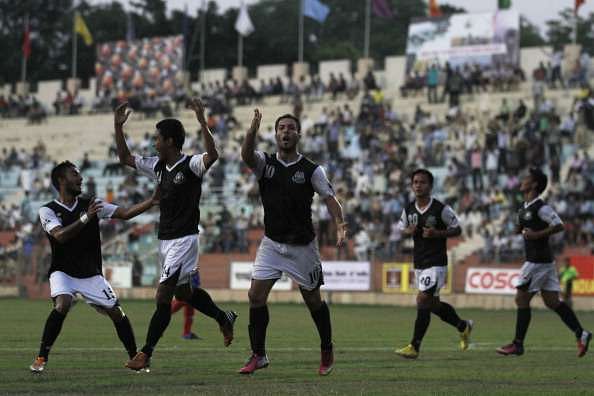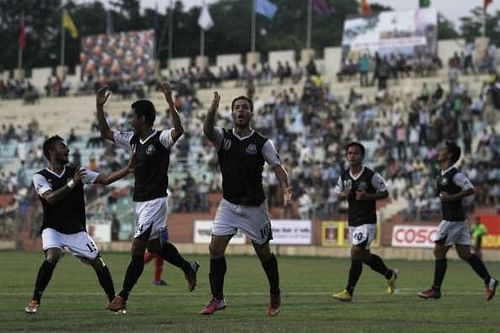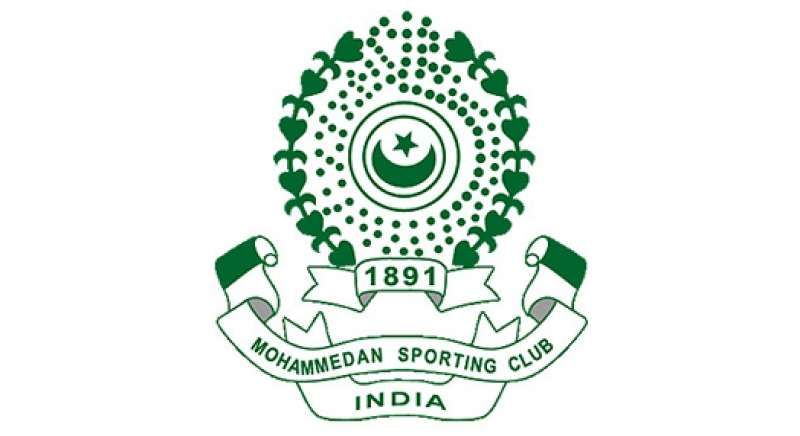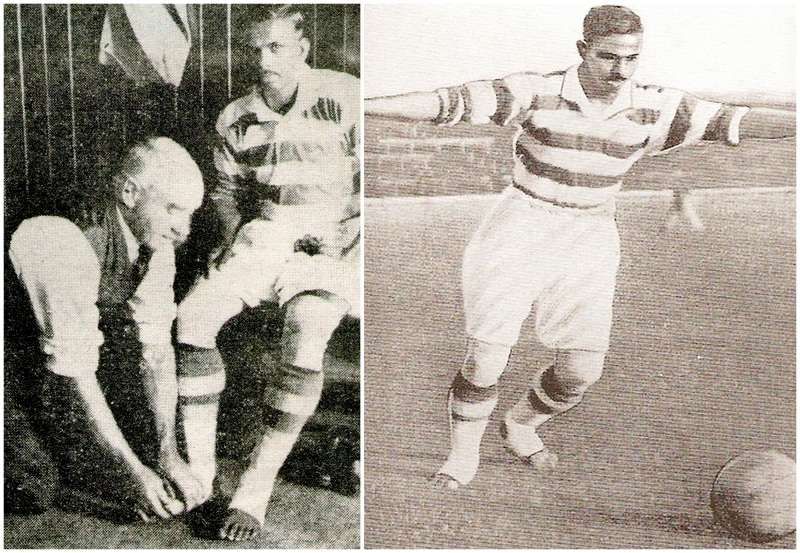
Mohammedan Sporting FC: Tale of ‘India’s Invincibles’
‘Rome was not built in a day’ is a famous French proverb which has been used for ages to define stories which teach us perseverance, discipline and finally, success. Every attempt ever made, anywhere in this world, was to reach the level of invincibility. Sadly, very few did.
Football stories and success folklore go together, but thinking of invincibility in a sport seems naïve, doesn’t it? If anything could be compared to Mohammed Ali’s boxing or Michael Phelps’ swimming in football, it should be a team’s invincibility, its total domination over its rivals, unrivaled ability in all three spheres of the game – Defending, distribution, and attacking-wise.
A dip into the history of the game and you come up with two names – Preston North End of 1880s and more recently, the Arsenal ‘Invincibles’ of 2003-04. The success of any team is thanks to significant planning and hard work.
There’s a similar story, here in India, which has not been talked about much. Let’s travel back in time to see our very own, desi ‘Invincibles’.
Sticking to club football, you could possibly have a few names in mind. East Bengal FC, Mohun Bagan or even Aryan FC?
No, none of those three giants. The team is Mohammedan Sporting FC, and the period was 1934 – 42. Domination for that long a period is unmatchable in even international football.
Club History
Mohammedan Sporting, one of India’s oldest and football-rich club plays in the 2nd division of the I-League and is not a part of Durand Cup anymore. Ironically, Mohammedan Sporting is the first Indian club in history to win the Durand Cup, whilst the country was still under British Raj.
The club had humble beginnings, with Nawab Azizul Islam founding the club in 1887 with the name ‘Jubilee Club’.
The main target was to spread football to the sizeable and growing Muslim population in Calcutta. The name of the club was changed twice – first to ‘Crescent Club’ and then to ‘Hamidia Club’ and finally, in 1891, ‘Mohammaden Sporting FC’ came into being.
Winning the Cooch Behar Trophy in 1902, 1906 and 1909 got the club considerable success and fame, but invincibility came much later.
The 30s
C. A. Aziz, one of the first modern thinkers in Indian football, in the early 1930s, understood the importance and brought boots to footballers for the first time. Mohun Bagan had some of the best players of the country playing with them and several players couldn’t get first-team football. Aziz began building this team, recruiting Bagan rejects Kaleh Khan and Hafiz Rahid in 1931.
Communalism has always been in India’s roots, even in football. Aziz was slowly building an unstoppable team, bringing in players from all parts of the country, often in the name of religion and community.
Left-half Masum, Mahiuddin and Rahmat came from Bangalore; and defender Jumma Khan from the Western borders. The whole team had a Muslim core, with no players outside the community. This helped Aziz to create unmatched unity in his squad which showed on and off the field.
Leicester City won promotion to the English Premier League for the first time in 2014-15 and won it in 2015-16. The Mohammedan Sporting team did something similar and won the Calcutta Football League in 1934, the year of its promotion!
The next year saw the team grow by leaps and bounds. The captain’s armband was given to one of the finest leaders in Indian football history, Abbas Mirza. He could instill teams with confidence single-handedly, and was a fighter at heart.
In the summer of 1935, Mohammedan recruited the irreplaceable Osman Jan – a fearless goalkeeper from Delhi’s Crescent Club. Modestly built and standing at just 5’6”, Osman had a great leap and a powerful fist.
Sailen Manna, one of the best defenders India has ever produced, called Osman the best goalkeeper he has ever seen. Known to have a mind of an outfield player, Osman was almost unbeatable on one-on-one situations, which led to brilliant defensive results for the club.
Attack, attack, attack
Sir Alex Ferguson famously said, “Attack wins you games, defence wins you titles”. Aziz implemented just that. With Osman Jan under the bar, Taj Mohammad and Jumma Khan were part of the strongest back-line in the country.
Taj Mohammad was feared by rivals for his hard tackles, and Jumma Khan, who had plied his trade in Quetta before joining Mohammedan, was known for his heading abilities.
Their attack line terrorised opponents to no end. Noor Mohammad was an extremely industrious player with a strong tackle and he screened the defence. Left-half Masum complimented him aptly, being the creative genius of the midfield.
Barcelona has a trio in MSN now; Mohammedan had it then in the 3 R’s. The triumvirate of Rahim, Rashid and Rahmat created havoc in the opposition half. Rahmat was the attacking mind of the three, while Rashid had a brilliant left foot and great ability in the air. Left out Bacchi Khan was industrious too and had a rough style of play.
Rahim and Rashid were always heading the goal charts. Rashid was the highest scorer of CFL in 1935 with 16 goals, while Rahim achieved the same in 1938 with 18 goals.
Twinkle toes from India – Mohammed Salim
With so many incoming players and changes in the team, one man who saw through et al was right-out Mohammed Salim.
Abdul was amazingly creative and possessed unbelievable ball skills. Salim gave trials at Scottish Club Celtic FC, stunning the locals with the ball at his feet. Salim, coincidentally, was the first foreign player to trial for Celtic. Salim’s homesickness made him return to India and join Mohammedan, to Celtic’s loss and the home club’s gain.
An excerpt from a Scottish Daily Express report on Salim said this: “Indian Juggler – New Style. Ten twinkling toes of Salim, Celtic FC’s player from India, hypnotised the crowd at Parkhead. He balanced the ball on his big toe, lets it run down the scale to his little toe, twirls it, and hops on one foot around the defender.”
This team won the Calcutta Football League for five consecutive years, from 1934 to 1938, terrorising the opposition. The first team to win the coveted double – The Calcutta League and the IFA Shield in the year 1936 – Mohammedan had grown to become more than a football club, it had become a symbol of Muslim unity.
The 40s
The story, though, didn’t end here. This team went on to become the first Indian team to successfully defend the IFA Shield in 1942, defeating East Bengal via a Noor Mohammad goal.
For the first time in Indian history, a football club had received frenzied support from all parts of undivided India. The team re-wrote history from 1934-42 and the script was bound to continue. December 12, 1940 is hailed as one of the turning points in the history of Indian football and the game left its inedible mark in the country’s political history.
The Durand Cup final was scheduled to be played at the Irwin Amphitheatre in Delhi in front of a packed stadium of 10,000 people. Eminent Muslim politicians flew in from various cities like Kolkata, Dhaka, Hyderabad and Bhopal, while commoners arrived at the venue in tongas.
Historically important in many ways, this was the first time an Indian referee was assigned to referee a match with this importance. Captain Harnam Singh, the match referee, had been given a police escort from to the stadium. As per the tradition of the Durand Cup, the then Viceroy of India, Lord Linlithgow arrived at the stadium to inaugurate and attend the final.
Eventually, a tactically sound and composed performance saw Mohammedan beating Royal Warwickshire Regiment 2-1 with goals from inside left Saboo and centre forward and star player Hafiz Rashid. For generations, stories of the famous victory were narrated in the bylanes of Old Delhi. The eleven Muslim players defeating the British gave a major push to Muslim National Movement.
By the end of 1940, Mohammedan Sporting had Indian football at its feet. They had won the Triple Crown – the Calcutta League, the Rovers Cup and the Durand Cup in historic ways. Their invincibility comes from the fact that they won the Rovers Cup without conceding a goal, the only instance in Indian football history till date and a rare sight even in world football.
Current Times
Shakespeare famously said, “What’s in a name?” Ask a Mohammedan Sporting follower and he would tell you the sad story. One of the ‘Big Three’ of Indian football, Mohammedan Sporting cannot receive funding from liquor brands, which support the other two, East Bengal and Mohun Bagan.
With such barriers, clubs like Mohammedan Sporting that depend on memberships and ticket sales cannot survive and succeed.
Sadly, such inspiring stories have been lost in the pages of Indian football history. We wish the giant rises again, to set the stage alight, to rule the football world and to create memories, yet again.
Football needs a push, and clubs such as Mohammedan need proper financial support to prove to the world they’re not done yet, that they have a fight left in them.


